Sangria how to make it easily and refreshingly

Sangria how to make it easily and refreshingly. Sangria takes its name from the reddish color it gets from its main ingredient, red wine. There are different types of sangrias, with white wine or with champagne, but the classic Spanish one is the one made with red wine. It must be done with a decent wine and use natural fruits and not in syrup. The maceration time is two hours and it is preferable to dissolve the sugar in hot water to facilitate its dissolution in the wine.
Regarding the fruit that it should have, it is normally said that if it does not have a peach, it is not sangria. The combination of the rest of the ingredients varies to the taste of each one and includes banana, apple, pear, orange, lemon or peach.
If you want to know more about sangria, after the recipe we tell you its history and origin.
recipe information
-
- Preparation time: 20 minutes
-
- total time: 20 minutes (plus 2-3 hours of rest)
-
- rations: 4
-
- Category: drinks
-
- Type of cocktail bar: Spanish
-
- calories: 173 kcal per cup
Sangria ingredients for 4 people
-
- 1 l of young red wine
-
- 1 can (330 ml) soda (orange, lemon or white)
-
- 2 peaches
-
- 2 oranges
-
- 1 lemon
-
- 1 banana
-
- 1 apple
-
- 1/2 cinnamon stick
-
- 35g of sugar
-
- 3 tablespoons of water
-
- cubed ice
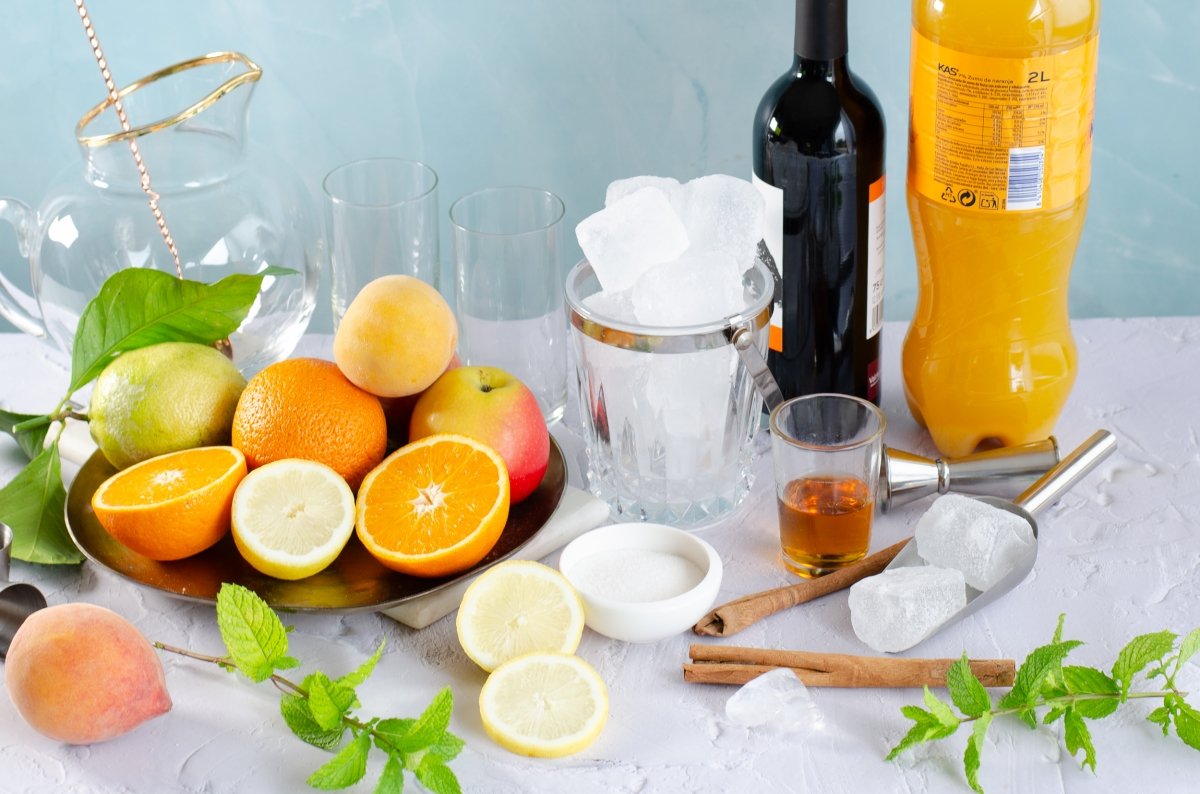
How to make the sangria
The type of glass that we will use is wide so that the pieces of fruit fit better. Peel all the fruit and cut into pieces. Heat the water and dissolve the sugar in it. We put everything in the container with the wine.
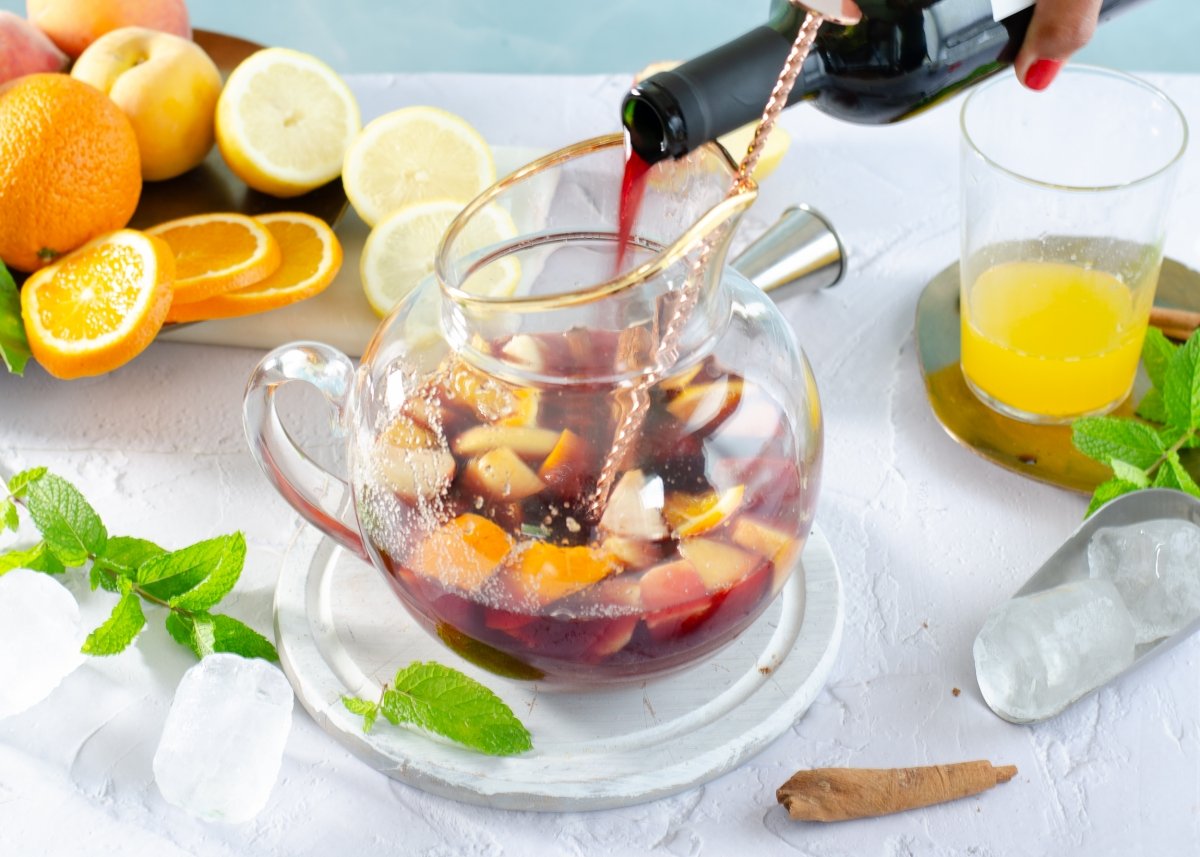
Add the lemon juice and stir.
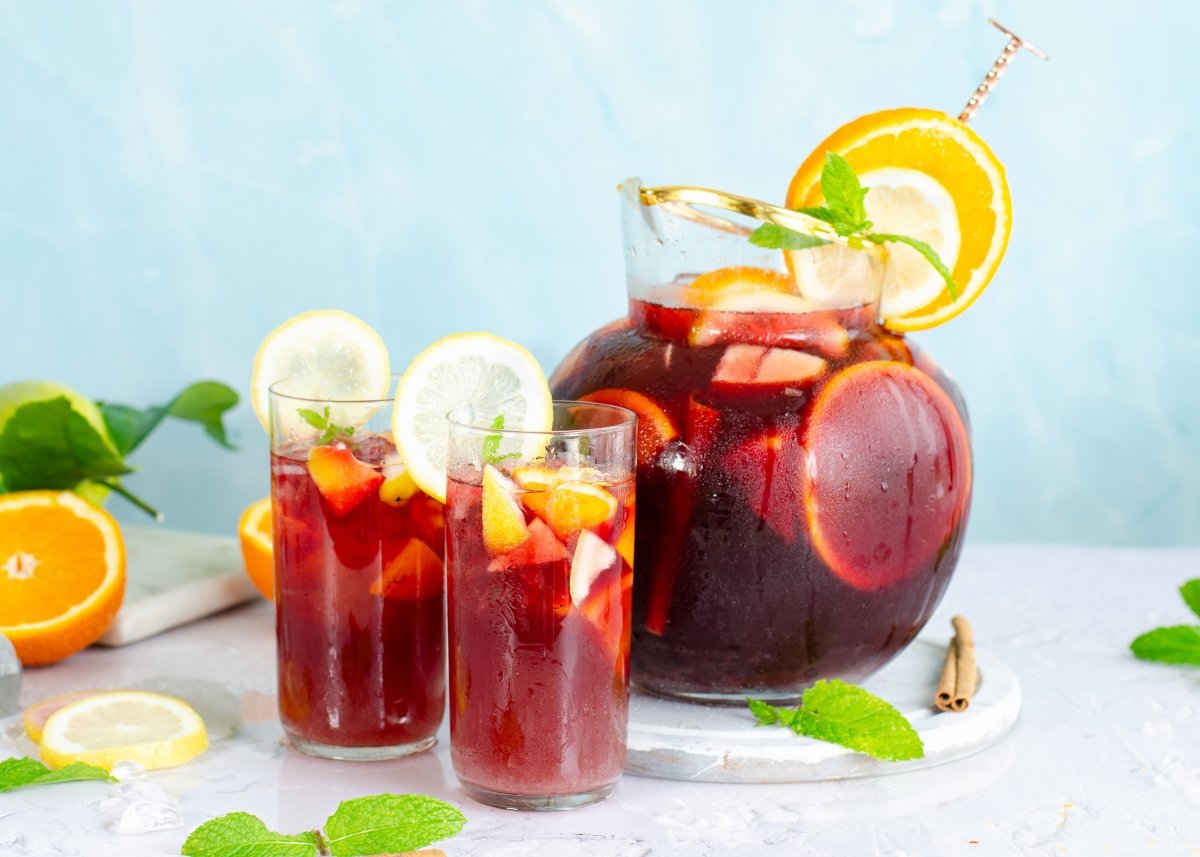
Add a cinnamon stick. Cover with a lid or transparent film and let marinate for 2 or 3 hours in the fridge.
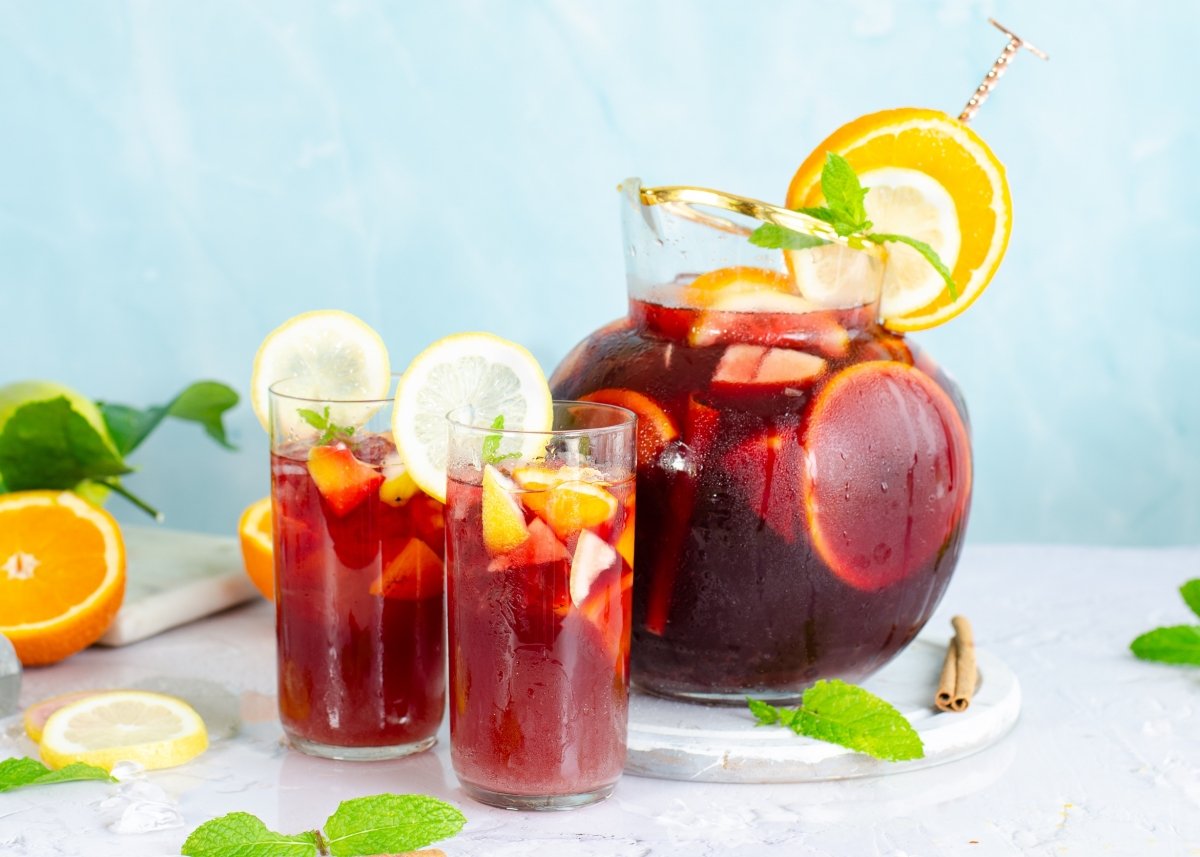
We serve the sangria in the glass with some ice cubes.
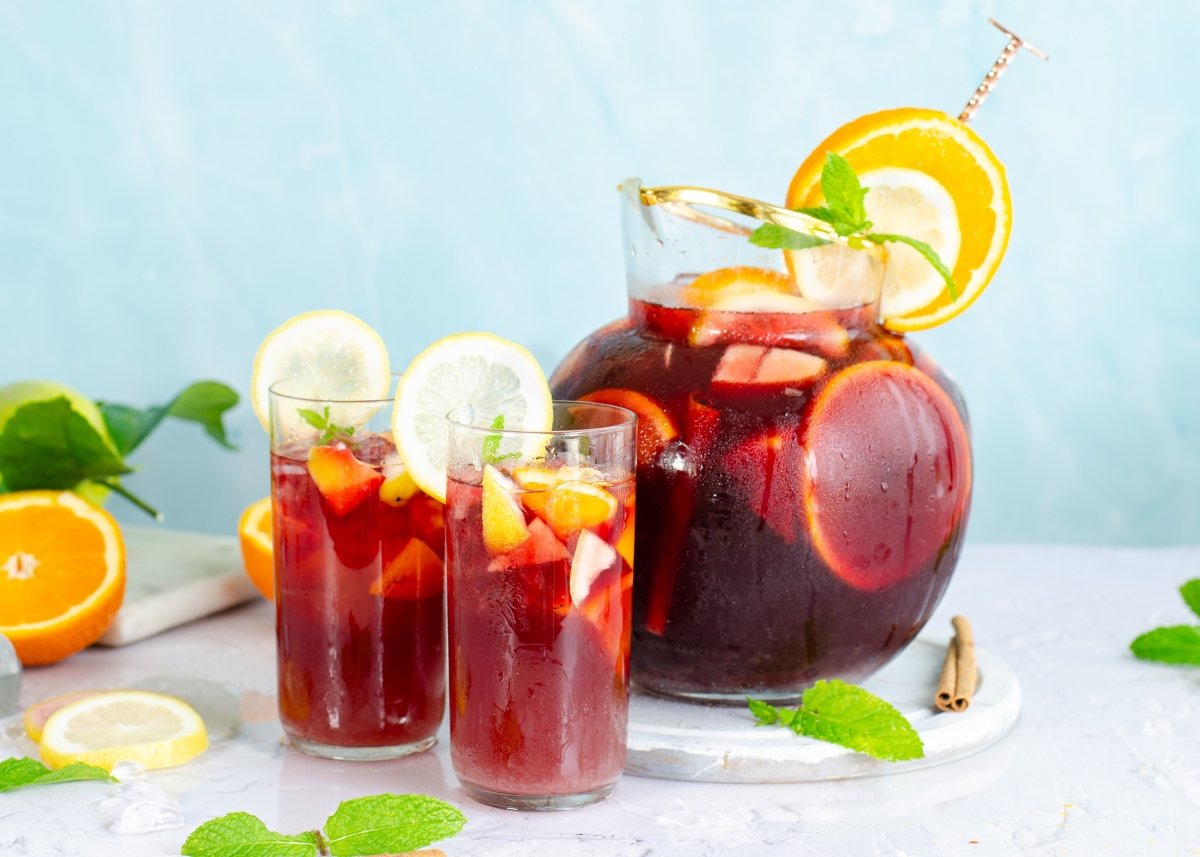
Finally, we add the orange soda to give our sangria a carbonic touch.
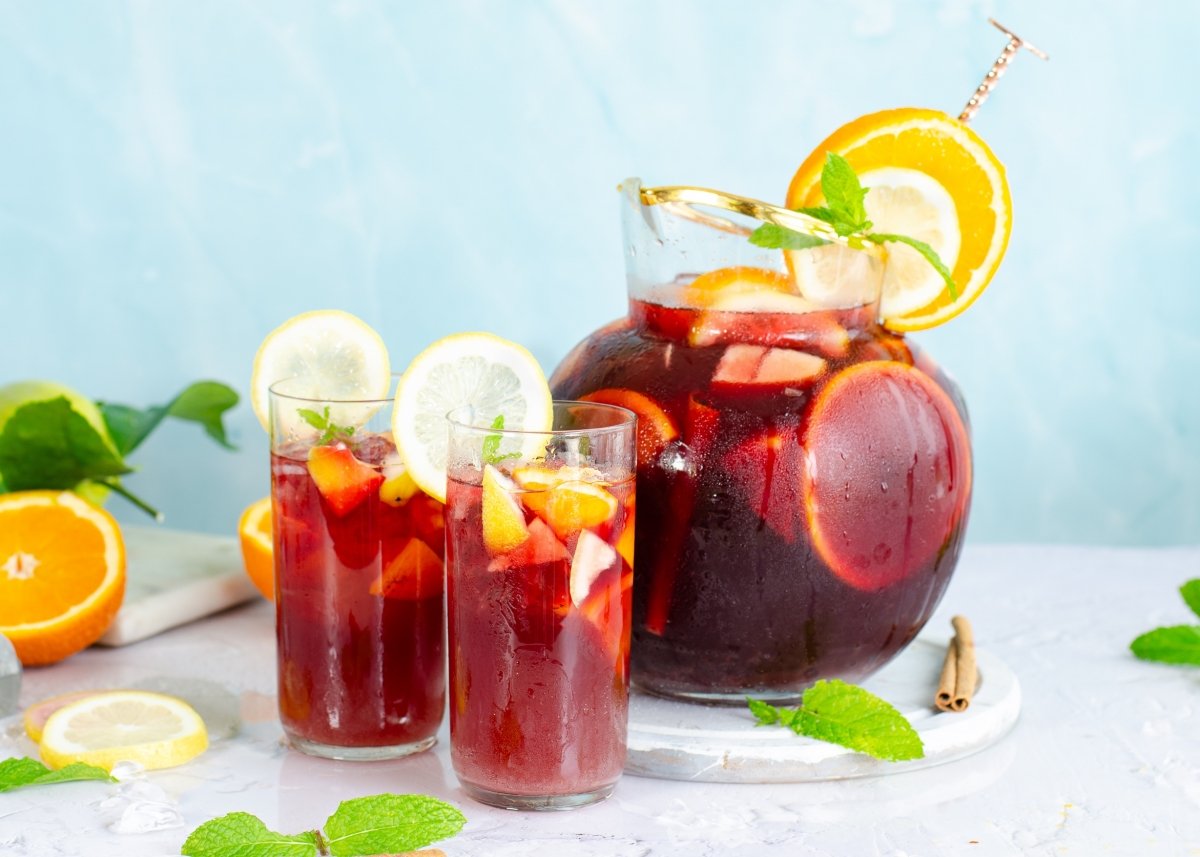
Decorate with a slice of lemon or orange.
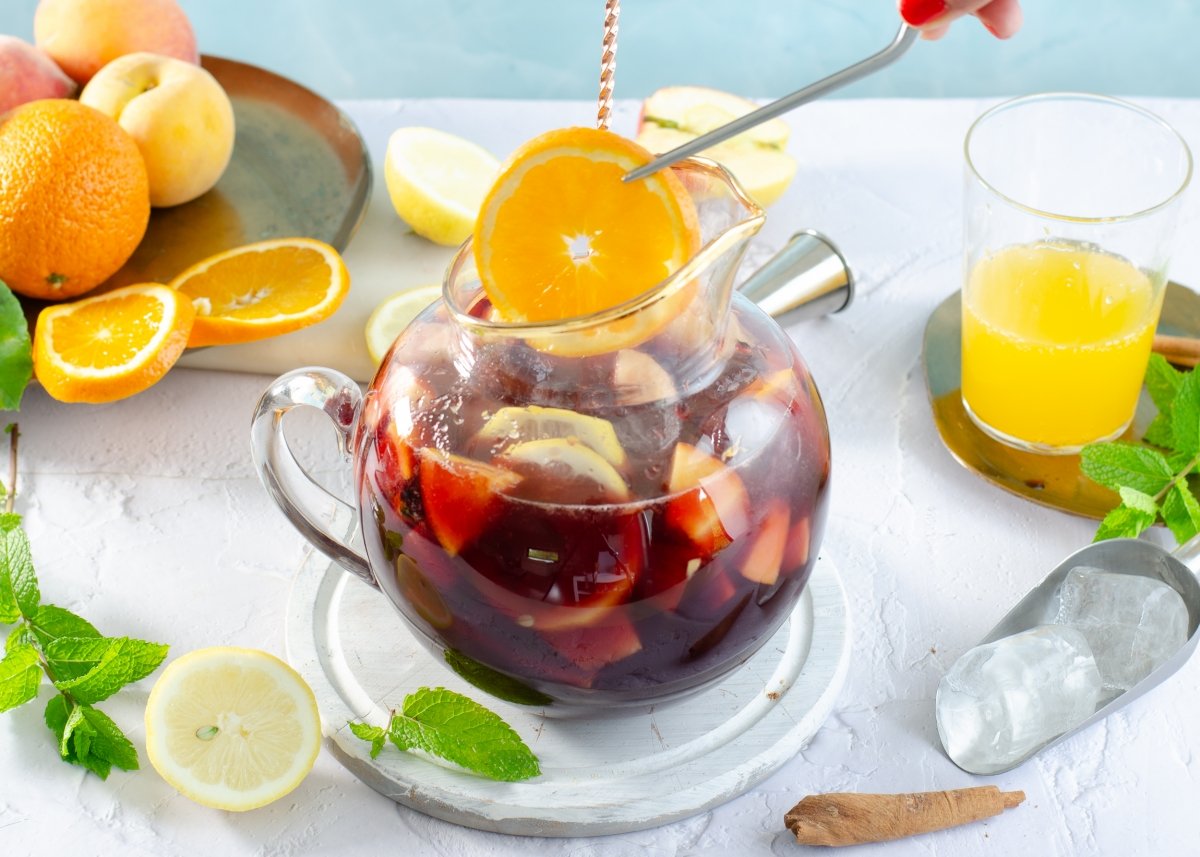
Easy preparation summary
-
- Peel and slice the fruit
-
- Add the sugar dissolved in water with the wine and fruit
-
- Add the lemon juice and a cinnamon stick
-
- Let marinate in the fridge for 2-3 hours
-
- Serve cold and add orange soda or soda
-
- Garnish with a slice of lemon
History and origin of bleeding
As usually happens with many other preparations, the origin of the bleeding is a bit unclear and there are several hypotheses about what its true origin could be.
Already in ancient Rome it was usual mix wine with water and spices to flavor and “cure ills.” Later, in the Middle Ages, these wines underwent hundreds of variants such as grog, a mixture of diluted rum with hot sugar water that English sailors drank to improve their spirits at sea; or the hippocrasa drink made of wine, honey and spices, which had a similar purpose, almost always associated with the adventures (or misadventures) of the military or navigators.
Some files indicate that the objective was reduce the rum or wine with a smooth mixture so that the soldiers and sailors would not soon run out of liquid reserves, but there is also the belief that these men began to smuggle these mixtures inadvertently and smuggled into the ships, to get around any prohibition on drinking alcohol. In this way, they simulated fruit juice and distributed the mixture without the permission of the authorities.
One of the hypotheses about the possible origin of the indentation As we know it today, he attributes its creation to the Spanish and Portuguese peasants who prepared it with the products they obtained from the land, such as wine mixed with peaches, citrus fruits, and apples.
Another theory indicates that the possible origin of this drink dates back to the year 1788, when the Spanish father Esteban Torres wrote in his Spanish dictionary that sangria was a drink invented by the English that is widely drunk in the English and French colonies of America. From this idea, it is believed that the first time a similar liquid was heard of was in the British West Indies. The drink also became popular, at that time, as the “wine lemonade” in some Spanish colonies.
According to this theory, the word comes from the English word sangaree, which, in turn, was inspired by the Spanish blood to name this soft drink by its color, which was achieved thanks to the mixture of fortified wine (such as Porto, Madeira or Malvasia Canaria), water, sugar and nutmeg, and some even indicate that toasted bread was added. Although there are versions that ensure that the term could come from Portuguese blood and for the medicinal qualities of making “bon sangue” or “good blood.”
Besides, the French have their own hypothesis about the name. They assure that this drink was born in the French Antilles and not in the Spanish or British colonies and that the word sangria is a derivation of the expression sang-griswhich was, in the same way, a drink made from wine, sugar, lemon and spices.
According to some French historians, the expression sang-gris, itself, comes from the buccaneer world, because in the 19th century, pirates used to mix black powder into their wine for flavor, resulting in a gray drink. Centuries later, the French whiskey house Jean Boyer launched a bottle of sang-gris, made from white rums from Guadalupe with fruit infusions, and spices such as chili with honey which, according to these producers, was the mixture that was consumed in the Antilles. Although this drink differs in color from sangria, the French claim that the voice sangaree more closely resembles sang-gris. The truth is that, for all these meanings, the recipe seems to be the same.
The expert Ted Haigh, known as Dr. Cocktail, emphasizes that the sangaree is not the same as sangriabut maybe its predecessor, in its article History Lesson: The Sangaree published in Imbibe magazine. «Dictionaries of all bands record the words as synonyms, but this is not exactly the case. The red wine, citrus and sugar drink we call sangria dates back to 1961while sangaree has existed since at least 1774. Both drinks have the same root in Spanish: sangre (meaning “blood”), but of the two, sangaree is the most versatile,” says the expert.















Welcome to Sweet Eats Cakes
Where delectable dreams come to life in the form of exquisite confections! Sweet Eats Cakes isn't just about taste; it's about turning moments into memories. Our cakes are crafted with precision, attention to detail, and a sprinkle of magic to ensure that each slice is not just a treat for the taste buds but a feast for the eyes!